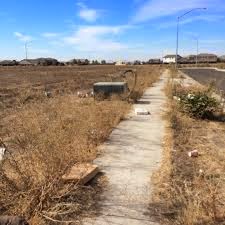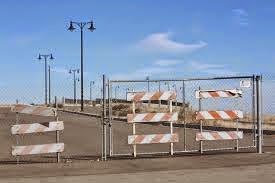http://archplanbaltimore.blogspot.com/2014/how-does-republican-mid-term-victory.html
 |
114th Congress House of Representatives Map
theblaze.com |
Hello Everyone:
You honestly did not think I would let the Republic demolition derby that was last week's Midterm Elections slide without comment, did you? If you voted for the red team, then you were popping champagne corks all night long. If you voted blue, the you were crying in your beer. I can say, without contradiction, that in California all is status quo. Be that as it may, since this is a blog dedicated to all things architecture, historic preservation, urban planning and design, yours truly has to put some kind of urban spin on the whole (Re) Election Day. With the help of one of our favorite people, Klaus Philipsen and his recent post "How does the Republican Mid-term Victory Square with the Age of Cities," in his blog
http://archplanbaltimore.blogspot.com, we are going to look at what the Republican victories mean for the urban era.
 |
Brooklyn Heights
Brooklyn, New York
luxuryrentals.com |
Up until Election Day, urbanists and planners perusing all the research published by
CityLab, Urban Land and the Brookings Institute might have found themselves reading more or less the same regarding millennials, urbanism, and the sharing economy. In this brave new world, hipster twenty-somethings sit in their local coffee emporiums, creating a bright new future where Uber and public transit take the place of cars, innovation zones are blooming in decrepit warehouses, issues of gender and race are consigned to the dust bin of history. Got to love these "shiny happy people." Thus, you can imagine all the sobbing and hand wringing last Tuesday, into Wednesday when "69 of 99 state legislative bodies [fell*] in Republican hands, [leaving*] 31 Republican governors to Democratic ones." This was not a shellacking, it was a blue blood bath for progressives.
 |
"The Loop"
Chicago, Illinois
kapowevents.com |
After decades of suburban migration, sprawl, and inappropriate development, things seemed to be turning a corner in the right direction. "A thoughtful urban president had replaced the one who liked to depict himself as a mesquite hacking rancher, and cities along with urban sophistication appeared to be on the rebound, over the Tea Party's cries of elitism." It was the dawn of the Age of Cities. Cities were trending as the "...new international life-style." American demographics presented two key cohorts: baby boomers (those born 1946-1964) and millennials were heading back to the cities; "...too old or too cool for suburban homes." Immigrants were considered innately urban, accustomed to cities, density, and walking, thus activating U.S. cities. These trends led many to consider Republicans as a "too white, too make, too suburban, and too conservative to have a future in the shifting demographic landscape." Of, course that was before the Midterm Elections and those progressive heart attack inducing results did not follow form. What happened?
 |
Maryland map of 2014 gubernatorial election
baltimoresun.com |
Klaus Philipsen asks: "Did the self-sustaining feed-back loop bubble just burst? Did actual real world voters and their larger counterpart, the non-voters, indicate the priority of more basic needs and views? did the bifurcation between the more urban and the more rural areas get revived after many already believed it to have died down alongside the Tea Party's radical social agenda?" My own thoughts, yours truly voted along pragmatic lines.
Results suggest that the death of suburbia and rural communities is premature. While the big urban issues of: smart growth, the environment, main street revitalization, public transit, high-speed rail, storm water management all continue to hold planners and environmentalists in their gripe, these issue have little or no resonance beyond the urban core. Using his home state of Maryland's small towns as his case studies for happiness, places such as Cumberland, Rock Hall, Salisbury, and La Plata as well places without the urban centers such as: Pikesville, Ellicott City, and Towson all still went with the progressive agenda. Yet, as a concerned Mr. Philipsen writes, "...the threat to progressive policies failed to mobilize the voters in the urban centers, a voting pattern also seen in other traditional blue states such as Massachusetts and Illinois, not to mention south of the Mason Dixon Line."
 |
U.S. Metropolitan Map
creativeclass.com |
Indulging in some speculation as to the larger meaning of the horrid results for the Democratic Party, Mr. Philipsen writes, "...if we really live under this new urban paradigm, past patterns shouldn't apply exactly the same way as before, should they?" What were the commonalities that motivated exurban voting patterns. Maryland, one of the wealthiest states in America, voting patterns mimicked voter trends in other urbanized states: poverty in the urban cores, some outrageously rich exurbs and suburbs, otherwise decreasing wealth as the distance from metro areas increase. Election results are really not an indication of income. For example, the affluent Montgomery County, a short distance from Washington D.C. went bright blue while the equally prosperous Howard County, near Baltimore, carried the red team. Moreover, every county further away from the metro areas went "cherry ice cream smile" red. The image of the "bluest blues" island amidst the Red Sea in Maryland mirrored the national map with blue zones clustered near the more urban coasts.
 |
Rittenhouse Square
Philadelphia, Pennsylvania
apartmenttherapy.com |
Remember when Democratic Party strategist James Carville coined a variation of the phrase "it's the economy, stupid?" It would seem that the Grand Old Party adopted that folksy message, implying the old economy of heavy industry, coal, oil, farming, trucking, and so forth. These are jobs closely connected to the rural areas and legacy industries. Case in point is Maryland's poultry industry, forestry, farming, and more recently just outside the state, surging oil and gas industries which brought with it jobs through shale fracking. Even allegedly ailing automobile industry has been resuscitated in the southern states where Volkswagen, BMW, and Mercedes have opened up new factories deep in the heart of Republican red territory. Klaus Philipsen observes, "These legacy industries are the opposite of the urban innovation districts where knowledge workers program 3-D printers to produce smartly designed products cleanly and sustainably and wind farms and solar panels make carbon free energy.
 |
H Street Festival
Washington D.C.
dcurbanturf.com |
Klaus Philipsen offers, by his own admission, a rather flippant description of the conflict between the goals of smart growth, preservation, and resilience. Essentially what he says, "In small town and hamlets one is more likely to smell diesel than the aroma of freshly brewed organic coffee and more likely to welcome a new development than in the crowded centers..." Mr. Philipsen confesses that the problem is far more complicated then the never ending cultural wars, pitting the "elite" with regular people. Mr. Philipsen cites the example of the Republican mayor of Greenville, South Carolina and the amazing progress it is having making the city green.
 |
Downtown Baltimore
Robert McClintock
robertmcclintock.com |
In his home state, the Republican candidate (eventual winner) for governor skillfully steered clear of all social issues and any anti-intellectual statements, so common with the Tea Party. Mr. Philipsen uses
New York Times conservative columnist David Brooks's word-"Detoxified-" to describe this sanitized Republican campaign strategy. Governor-elect Larry Hogan successful. reasonably civil campaign message also found an audience with many Democrat. His focus on the economy, while still echoing the favorite Tea Party depiction of Democrats as "tax and spenders." The incoming governor outlined forty taxes that the his predecessor, Governor Martin O'Malley, had carelessly added resonated with the people. The bottom line in Mr. Hogan's case for electing him was "...people had to pay too much for progressives policies..." really hit home for many of the people, despite the fact the State's tax rate in context to its Gross Domestic Product had dropped during the previous Democratic administration. As a candidate, Mr. Hogan's favorite targets regarding urban issues, especially something he called the "rain tax," a fee on storm water run off dunned on property owner with large sealed surface areas. Storm water run off is a huge topic for environmentalists because the water usually ends up in Chesapeake Bay instead of re-charging ground water. The fee sounded like a good idea to environmentalists and could be avoided by the more complicated rain harvesting.
 |
Silver Line street entrance
gettyimages.com |
Like his Republican counterparts across the country, Mr. Hogan was opposed to big transit spending. During his campaign, he stated that as governor, Mr. Hogan would cancel Maryland's two large "New Starts" transit program which had a combined cost of $5.5 billion and built roads instead. Mr. Hogan posited, "With the vast majority of people getting around in cars it is irresponsible to spend over 50% of the transportation funds on transit." This message obviously was aimed at the rural and distant suburban areas that would see little benefit from a new urban rail system and had seen their "highway user fund" cut by the state, leaving crater-sized pothole unfilled throughout many of these communities. However, Mr. Philipsen points out that "...a Republican governor with so many cross-over votes would ignore the urban centers at his own peril and should be open to the economic development aspects of transit investments." In essence, it has been demonstrated across the country that urban rail projects are economic mechanism that go beyond the temporary jobs during construction but translate into community and economic development as well as real land investments.
 |
Tyson Corner neighborhood
tysonliving.com |
Staying in Maryland, the mid-term results reflect not so much where the voters are in relation to demographics, rather, the fact that suburban and rural voters were more motivated than their urban counterparts, as witnessed by a higher turn-out and more conviction in their cause. We can draw the conclusion that urban voters simply took for granted that the more progressive agenda would rule the day. This sense of voter apathy among urban voters was couched in geography and demographics. Like the political parties, progressives and their allies must recognize that voters will not fall in lock step with them anymore. As individual situations change, so do voters's views. Thus, a social conservative may align his or her self with an environmentalist or a civil rights and social activists may not be too keen on the environment. The idea that everyone and everything is connected does not hold sway with the modern voter who is about as predictable as the weather.
 |
Boston City Hall Plaza
Boston, Massachusetts
en.wikipedia.org |
The big question before us is, if we are concerned with the future, can we find common ground with someone who wants dismantle environmental regulation and cut transit funding. After the election demolition derby, this is the proverbial $64,000 question every Democrat from President Barack Obama down needs to ask. Can we make a case for not subsidizing pre-Kindergarten education for children from low-income households or not funding wind farms? Can less government intervention, in the name of the greater good, a morally defensible argument? Mr. Philipsen argues, "it is too arrogant and presumptuous to assume that the vast majority of folks who either didn't vote or who voted against the democratic or green urban agenda simply don't know better or are cynically choosing their own welfare over the common good. The real reason for the fact that about 65% didn't even bother to vote must lie beyond which one of the two parties is right." Well said. Common sense not party ideology must rule election day.
 |
Blighted Baltimore
npr.org |
There has been a great deal of discussion over the negative aspects of the majority system, used in the United States, which does not allow for smaller, less well financed groups to articulate their well-defined platforms. Further, much has written about how corrupt the electoral process has become with ballot initiatives and candidates receiving money from those who have. There is the endless hand wringing about the role of the media during elections, how uninformed the average voter is, and how elections have become more of a beauty contest then about issues. Yours truly could on with a list of issues that make people want to sit out election day but rather bore you to death about, I will cite Mr. Philipsen's well formed conclusion,
Most of these reasons lie way outside the issue of urban versus rural lifestyles or values. More intriguing and possibly contributing to voter frustration and anxiety is the question of the instability of the economic system and its continues worldwide sputtering. The possibility that the Great Recession was the spectacle of this model having crashed irreparably against the wall is unsettling voters to this, some seven years after it began.
 |
Boats patrolling flooded Annapolis streets
Annapolis, Maryland
nnhs65.com |
The fragile economic model also begets the question: "What next? Can there be sustainability and growth and expanding prosperity all at once? Can one have one's cake and eat it, too, or does sustainability necessarily mean restriction, scarcity and cutting out the fun?" Yours truly is reading these questions and wondering what the answers are, they are out there. Over and over again, the question has been asked, "...the growth and prosperity model got another lease on life and dooms-day prognosticators have been proven wrong. Is it different this time? Republicans generally don't seem to think so."
Is climate change finally being recognized as the shape of things to come? Have not both sides of the issue, represented by the Democrats and Republicans, been proven wrong? Has not become apparent that government cannot solve the problem of carbon emissions? What about economically and politically strong countries such as Germany and Japan, with their histories of government intervention, lost their standing on the subject because of lack of progress? Finally, has the United States, with its more permissive attitude toward fracking, not accidentally achieved greater carbon reduction than those countries who built gigantic wind farms and put solar panels on practically every rooftop?
 |
Cleveland, Ohio
en.wikipedia.org |
Klaus Philipsen does not even make attempt, nor will yours truly, to answer these open-ended questions. Suffice it to say that these enormous issues are the very things that upset the harmony of the political landscape. They may be the larger reason why traditional political discourse within the parties, unions, and organizations across the stable democracies is disappearing, taking with it voter participation and sucking the enthusiasm out of feeling good about a host of issues. We voters as nervous and picky. We vote for the person we like the best, in that moment, dropping them like ex-lover the minute someone new and more exciting comes along. It is a vicious cycle, we fall in love with a dynamic young president, the love fades, replaced by cynicism and disappointment.
 |
A view of the Pacific Ocean
tripwow.tripadvisor.com |
Now that all the obligatory post-Mid-Term Election self-flagellation or self-congratulatory parties have died down, what next? Can we expect more of the same or will the both sides of the Congressional aisle finally learn to get along? Human knowledge is growing at an exponential rate; as will new opportunities in communications and the ability to solve problems. Mr. Philipsen writes, "I believe that we find ourselves at transition where top down control and governance becomes more obsolete and ineffective, and bottom up methods of control, governance and effective organization are still only emerging, are largely untested and far from ready to be a reliable substitute." I would propose an addendum to this statement by pointing to potential effective organization and leadership that state and municipal governments can provide on issues such as the environment and transit.
Urban centers will continue to be places of innovation and experimentation. Mr, Philipsen observes, "Ironically, Washington DC as a city is thriving and full of innovation while official Washington of the national government appears to be frozen up. Innovation and experimentation is great but it must serve a practical use outside the urban areas. The ability to create some shiny gadget on a three-dimensional printer is nice but what about the wheat farmer who needs spare parts in order to get the harvest done? A high-speed light rail system is a fantastic idea but would not it make more sense to fix the crater-sized pot holes in the exurbs and rural areas first? The point here, is Congress and the President now have a remarkable opportunity to work together so that the ideas of the urban progressive agenda can bring the urban, suburban, exurban, and rural communities. Will it be more of the same or can both sides of the aisle learn to work together?
* historicpca
*Ibid






























































